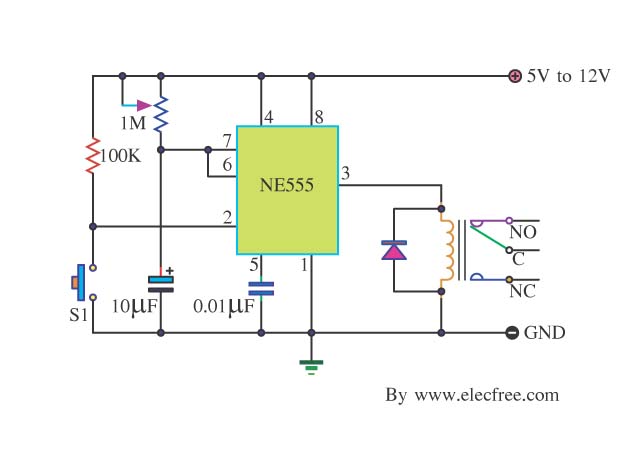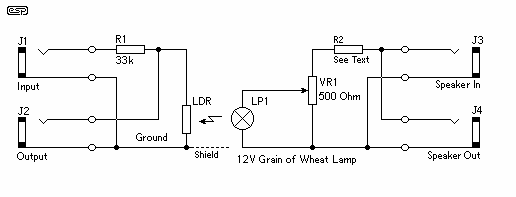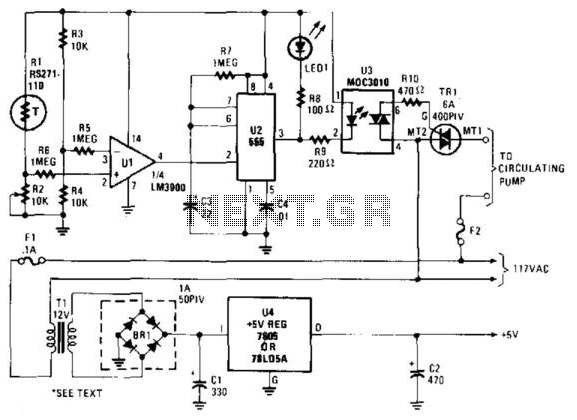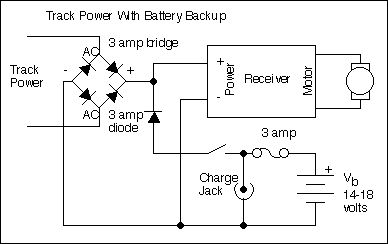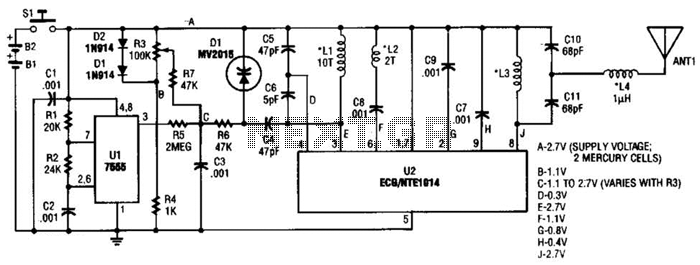
Bass Treble Loudness Tone Control Witha LM1036
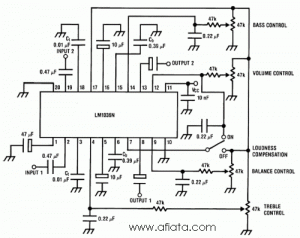
The LM1036 is a DC-controlled circuit designed for managing tone (bass and treble), volume, and balance functions in stereo applications, including car radios, televisions, and audio systems. Component: .
The LM1036 integrates multiple audio control functionalities into a single chip, making it suitable for various audio systems. It operates using a DC voltage to adjust the audio characteristics, allowing for precise control over sound output. The circuit includes dedicated inputs for bass and treble adjustments, which enable users to enhance low and high-frequency sounds according to personal preferences or specific acoustic environments.
In addition to tone control, the LM1036 features a volume control mechanism that can be adjusted smoothly to provide a comfortable listening level. The balance control allows for the adjustment of audio levels between the left and right channels, ensuring an even sound distribution across stereo speakers. This is particularly important in stereo applications where sound localization and spatial audio presentation are critical.
The LM1036 is typically used in conjunction with external components, such as resistors and capacitors, to form a complete audio processing circuit. The chip's design facilitates easy integration into existing audio systems, and it is compatible with various power supply configurations, making it versatile for different applications.
Overall, the LM1036 is an essential component for enhancing audio quality in consumer electronics, providing users with the ability to tailor their listening experience effectively. Its compact design and efficient operation make it an attractive choice for audio engineers and designers looking to incorporate advanced audio control features into their products.LM1036 is a DC controlled tone (bass/treble), volume and balance circuit for stereo applications in car radio, TV and audio systems. Component: . 🔗 External reference
The LM1036 integrates multiple audio control functionalities into a single chip, making it suitable for various audio systems. It operates using a DC voltage to adjust the audio characteristics, allowing for precise control over sound output. The circuit includes dedicated inputs for bass and treble adjustments, which enable users to enhance low and high-frequency sounds according to personal preferences or specific acoustic environments.
In addition to tone control, the LM1036 features a volume control mechanism that can be adjusted smoothly to provide a comfortable listening level. The balance control allows for the adjustment of audio levels between the left and right channels, ensuring an even sound distribution across stereo speakers. This is particularly important in stereo applications where sound localization and spatial audio presentation are critical.
The LM1036 is typically used in conjunction with external components, such as resistors and capacitors, to form a complete audio processing circuit. The chip's design facilitates easy integration into existing audio systems, and it is compatible with various power supply configurations, making it versatile for different applications.
Overall, the LM1036 is an essential component for enhancing audio quality in consumer electronics, providing users with the ability to tailor their listening experience effectively. Its compact design and efficient operation make it an attractive choice for audio engineers and designers looking to incorporate advanced audio control features into their products.LM1036 is a DC controlled tone (bass/treble), volume and balance circuit for stereo applications in car radio, TV and audio systems. Component: . 🔗 External reference
